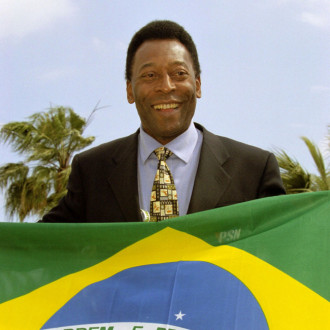By Simbo Olorunfemi
September 27th, 1977. The United Nations gave Pelé a certificate declaring him ‘A Citizen of the World’. That was just before he was to officially retire on October 1st, 1977, even though he would play in 8 exhibition matches between 1978 and 1990, with 2 of the matches played in Nigeria.

For a professional career which started in 1956, it was fitting that having scored 1,283 goals and won 3 World Cups, Pelé who had become one of the most celebrated figures around the world was declared ‘a citizen of the World’.
Indeed, long before the proclamation by the United Nations, Pelé had captured the imagination of the world since he made his debut in the 1958 World Cup, being the youngest player at the age of 17. He would build upon his incredible talent and unparalleled record in the game to become a renowned figure outside the field of Football. Before the UN declaration, Pelé had become an iconic citizen of the world, adopted by millions outside of his native Brazil.
Back in the day, it was impossible convincingly many Nigerians that Pelé was not one of us. Even with the limited level of global interconnectedness at the time, Pelé, along with Muhammad Ali, were phenomenal global icons with whom millions on the streets connected with, long before the birth of social media.
Pelé had been declared a national treasure by Brazil in 1961, forbidden from being sold to a foreign club. Yet, even as he was stuck with Santos, his fame was not limited to Brazil.

There are conflicting accounts about what actually transpired when Pelé along with his teammates from Santos visited Nigeria in 1969 during the Civil War.
One account has it that a temporary ceasefire was declared by both parties. A 2005 article in Time is said to have reported thus : “Although diplomats and emissaries had tried in vain for two years to stop the fighting in what was then Africa’s bloodiest civil war, the 1969 arrival in Nigeria of Brazilian soccer legend Pele brought a three-day ceasefire.” But this account has been disputed.
What is not in dispute is that Pelé visited Nigeria twice – 1969, as reported above. 1978, when he visited with Fluminense, playing two matches – one against the Green Eagles and the other, against Racca Rovers in Kaduna.
Pelé would, post-retirement, live up to the billing as a true citizen of the world, with a larger than life image, touring the world, playing different roles. He would, at a time, serve as the Brazilian Minister of Sport.
Pelé, a nickname, was not one Edson initially took a liking to. He thought the name sounded horrible. He wanted to be known as Edison, having been named after Thomas Edison, the inventor. But with the kids around realising that it annoyed him to be called Pelé, they did it even more until the name stuck.
It has stuck with Edson Arantes Nascimento for over 8 decades. Andy Warhol says that ‘Pelé is one of the few who contradicted my theory: instead of fifteen minutes of fame, he will have fifteen centuries.’
Who knows? Who can contest that? Pelé – A Citizen of the world indeed.


